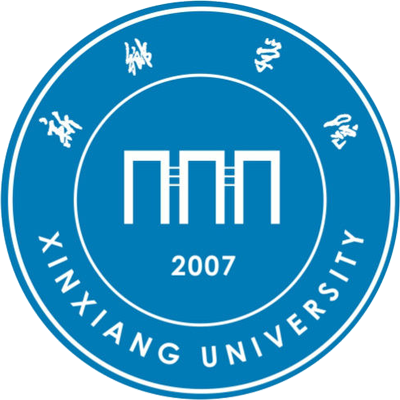详细信息
文献类型:期刊文献
中文题名:农村生态卫生基础设施集成系统效益分析
英文题名:Profit Analysis on Rural Eco-sanitation Infrastructure Integrated System
作者:郜彗[1,2];金家胜[3,4];李锋[1];周传斌[1];李秀霞[5]
第一作者:郜彗
机构:[1]中国科学院生态环境研究中心城市与区域生态国家重点实验室;[2]信阳师范学院城市与环境科学学院;[3]北京山地生态科技研究所;[4]北京市门头沟区科学技术委员会;[5]新乡学院艺术设计学院
第一机构:中国科学院生态环境研究中心城市与区域生态国家重点实验室,北京100085
年份:2016
卷号:39
期号:4
起止页码:182-189
中文期刊名:环境科学与技术
外文期刊名:Environmental Science & Technology
收录:CSTPCD;;北大核心:【北大核心2014】;CSCD:【CSCD2015_2016】;
基金:国家自然科学基金面上项目(71273254);北京财政专项;河南省2014年政府决策招标课题资助
语种:中文
中文关键词:生态卫生;生态服务;闭合循环;复合生态系统;生态效益
外文关键词:Ecological sanitation; ecological service; closed cycle; complex ecological system; ecological benefit;
摘要:随着新型城镇化进程的加快,以及美丽乡村建设的稳步实施,农村地区的经济和社会发展进入到了一个新的阶段,农村居民对改善生活环境的需求日益提升。村镇生态卫生基础设施建设以改善卫生状况、促进生态循环、保障生态安全为基本任务,对于提升农村生态服务功能,改善农民福祉具有重要意义。文章以北京市门头沟区水峪嘴村为研究单元,结合厨余垃圾资源化处理、污水生态化净化、粪尿分离式生态厕所等整套人居环境改造工程,从营养物质循环、面源污染消减、节约水资源、投资收益以及创造就业机会等视角分析其生态、社会和经济方面的综合效益,采用定量和定性相结合的方法来表征生态卫生基础设施提供的生态服务功能。研究结果显示:集成后的生态卫生基础设施每年实现2 956.9 kg氮、348.81 kg磷循环回归农田,避免直接排放环境中而加重农村面源污染;源分离便器的使用每年可以节约生活用水3 241.2 m^3,人工湿地工程全年可以提供中水10 220 m^3;相比于工程改造前,村庄向大气排放的氮减少了83.5%,向水体和土壤环境排放的氮消减了68.13%,磷消减了56.61%;集成系统全年可以降低用于化肥和水费支出的经济投入6.63万元,内部收益率12%,大于基础利率10%,经济效益明显。此外,生态工程的建设和维护也创造了就业岗位。文章试图探索适宜北京山区农村的人居环境建设的途径,为广大农村人居环境改善及生态文化提升提供借鉴和参考。
With the rapid urbanization in China nowadays,the development of economy and society enters into a new stage with the progressive implementation of project of the beautiful countryside construction in rural areas for better living condition in the countryside. Meanwhile,ecological sanitation infrastructure has been in construction aiming at improving hygiene condition,promoting ecological circulation and safeguarding ecology security. In the case study,a village of Mentougou District of Beijing was taken as an example,where an integrated living environment renovation project has been in construction including kitchen waste recycling,sewage ecological purification,and urine-feces separation toilet technology and so on. Furthermore,social-economic-ecological complex benefits were analyzed from different perspectives such as nutrition flow circulation,non-point source pollution reduction,water resource conservation,and investment return and employment opportunities creation. The ecological service functions derived from building of ecological sanitation infrastructure were demonstrated by both qualitative and quantitative methods. The results of the study showed that 2 956.9 kilos of nitrogen and 348.81 kilos of phosphorus being recycled back to farmland each year owing to the integrated ecologicalsanitation facilities,averting their direct emissions that led to non-point pollution. Meanwhile,with the constructed wetlands that have been built,10 220 m^3 of recycled water were provided for reuse;in addition,3 241.2m^3 of tap water were saved due to the installation of urine-feces separation toilet. Comparative analysis of before-and-after modification showed 68.13% of nitrogen and 56.61% of phosphorus reduction into water and soil;besides,nitrogen emission to air decreased by 83.5%.Furthermore,potential economic benefit was achieved by curtailing the use of fertilizer and water which amounted to 66.3 thousand yuan. In addition,construction and maintenance of the ecological engineering has created employment opportunities for local farmers. The example of the construction of residential environment in Beijing mountainous rural area is expected to provide references for people in vast rural areas to improve their living condition and uplift the ecological culture.
参考文献:
![]() 正在载入数据...
正在载入数据...


